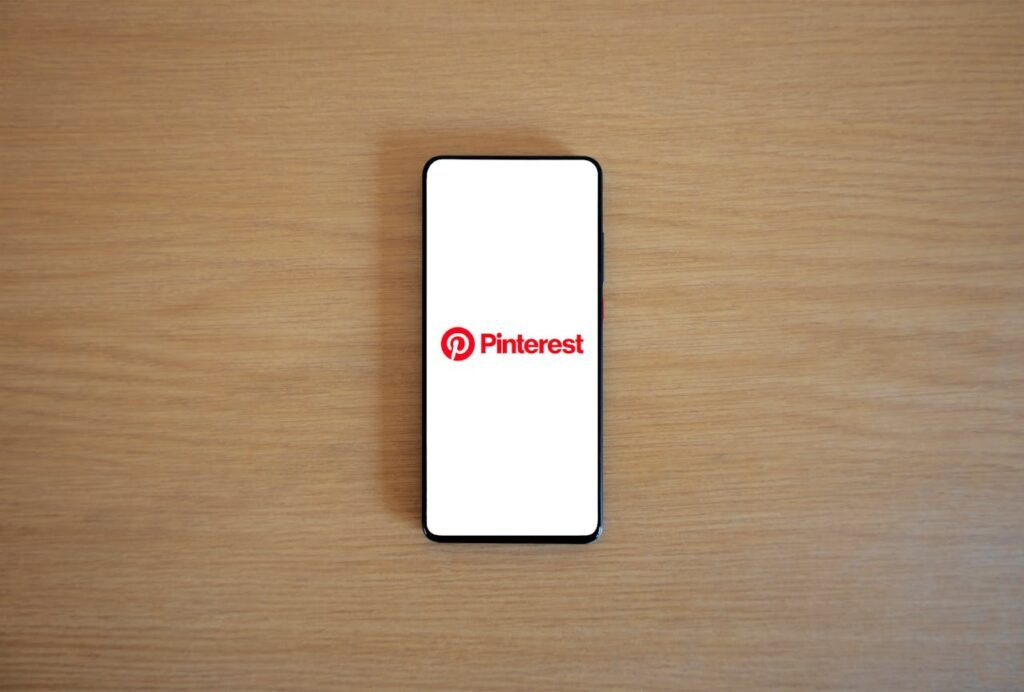Amazon has become the go-to platform for eCommerce, with its vast audience, trusted brand, and efficient fulfillment network. For many eCommerce businesses, listing products on Amazon has been a fast track to growth. However, depending heavily on Amazon can come with downsides: high fees, intense competition, and limited control over branding. While Amazon offers vast reach, it often forces brands to compete primarily on price, which can limit long-term growth and differentiation.
For CEOs looking to build a more sustainable eCommerce business, it’s time to consider a strategy that goes beyond Amazon. This article explores actionable ways to diversify your brand’s reach, build customer loyalty, and gain control over your sales funnel. These strategies provide alternatives that reduce dependency on Amazon while expanding your brand’s presence, building stronger customer relationships, and creating avenues for growth that Amazon can’t control.
Step 1: Build a Strong Direct-to-Consumer (DTC) Website
Create a Branded eCommerce Experience
The first step in reducing Amazon dependency is to establish your own eCommerce website. By building a direct-to-consumer (DTC) platform, you create a space that’s entirely yours—a platform where you control the branding, messaging, and customer experience. A DTC website allows you to differentiate your brand, showcase product value, and connect with customers on a deeper level, which can be difficult to achieve on Amazon’s competitive and standardized interface.
For example, a skincare brand can build a unique online experience on its own website, where it can display product benefits, ingredient details, and customer testimonials in a way that tells a cohesive story. This branded experience adds value beyond the product itself and strengthens customer loyalty, which Amazon’s product-focused listings can’t match.
Optimize the Website for User Experience and Conversion
Having a DTC website is just the start. To make it effective, focus on user experience and conversion optimization. This means creating a seamless, intuitive interface that makes it easy for customers to find products, understand their benefits, and complete purchases. Use clear calls to action, streamlined navigation, and mobile-friendly design to create a smooth shopping experience.
For instance, if you’re selling kitchen gadgets, consider including detailed product descriptions, customer reviews, and “how-to” videos to demonstrate each product’s use. By providing an informative and engaging shopping experience, you increase the likelihood that visitors will convert to buyers—and return for future purchases.
Implement On-Site SEO to Drive Organic Traffic
Once your website is live, SEO (Search Engine Optimization) is crucial for attracting organic traffic. Optimizing your website for search engines involves researching keywords related to your products and industry and then incorporating those keywords into product pages, blog posts, and other content. Over time, SEO can bring in highly targeted, intent-driven traffic, reducing your reliance on paid ads or Amazon’s audience.
For example, a pet supplies brand could create blog content around pet care tips, which naturally attracts traffic from pet owners. This traffic is valuable because it’s highly relevant to the brand, making it more likely to convert into sales. With strong SEO practices, your DTC site can generate a steady flow of customers, independent of Amazon’s reach.
Step 2: Leverage Social Media for Brand Building and Customer Engagement

Establish a Social Media Presence That Reflects Your Brand
Social media is a powerful tool for building brand awareness, engaging with customers, and driving traffic to your website. Platforms like Instagram, Facebook, and Pinterest allow you to share your brand story, showcase products, and build a community around your offerings. A strong social media presence not only strengthens brand identity but also brings a steady stream of traffic to your DTC site, reducing the need for Amazon’s audience.
For example, a fashion brand can use Instagram to showcase its products through lifestyle photography, influencer partnerships, and user-generated content. By building a community around its brand, the company encourages customers to engage directly, creating brand affinity that goes beyond a single purchase.
Use Paid Social Ads to Attract Targeted Traffic
While organic social media is valuable, paid social advertising allows you to target specific customer segments with precision. Platforms like Facebook and Instagram offer advanced targeting options, enabling you to reach users based on demographics, interests, and behaviors. Running ads that promote your DTC website directly can bring in qualified leads who are more likely to convert.
For example, a home decor brand could run Facebook ads targeting homeowners interested in interior design. These ads could feature product collections, special promotions, or seasonal offers, driving traffic to the brand’s website instead of relying on Amazon listings. Paid social ads allow you to build your customer base independently, helping you scale without competing solely on price.
Step 3: Build and Nurture an Email List
Use Lead Magnets to Capture Email Subscribers
Email marketing offers a direct line of communication with your customers, enabling you to build relationships without the constraints of a third-party platform. Start by creating a lead magnet—something of value that you offer in exchange for a customer’s email address. This could be a discount, a free guide, or an entry into a giveaway. By capturing emails, you create an owned audience that you can reach repeatedly with relevant offers and updates.
For instance, a wellness brand could offer a free eBook on mindfulness tips or a discount on the first purchase for users who subscribe to their email list. Once subscribed, customers are more likely to engage with future emails and visit the brand’s website directly, strengthening their relationship with the brand and reducing dependency on Amazon.
Send Targeted and Personalized Email Campaigns
Once you have an email list, use it strategically. Segment your audience based on factors like purchase history, browsing behavior, or location, and send tailored campaigns that speak to each group’s specific interests. Personalized emails are highly effective in driving engagement and conversions, helping you nurture leads and encourage repeat purchases.
For example, a sportswear brand could send personalized emails featuring recommendations based on past purchases or seasonal collections. By delivering relevant content to each customer, you keep them engaged with your brand, making them less likely to rely on Amazon when it’s time to shop again.
Step 4: Diversify with Other Online Marketplaces

List Products on Niche Marketplaces
While Amazon is the largest marketplace, it’s not the only option. Niche marketplaces cater to specific interests or product categories, often attracting highly engaged audiences who value curated selections. Platforms like Etsy (for handmade and vintage items), Wayfair (for home goods), and Newegg (for electronics) can offer valuable alternatives to Amazon.
For example, a handmade jewelry brand could list products on Etsy to reach an audience specifically interested in artisanal goods. While Etsy’s audience may be smaller than Amazon’s, it’s also highly targeted, and customers are more likely to appreciate the unique value of handmade items, reducing price-based competition.
Expand to International Marketplaces
If you’re open to expanding globally, international marketplaces like Rakuten (in Japan) or Allegro (in Poland) can provide access to new customer bases. These platforms allow you to enter markets where Amazon may not be as dominant, giving you the opportunity to establish your brand in new regions.
For instance, a beauty brand with unique skincare products could list on Rakuten to reach Japanese consumers, who are highly interested in skincare. This strategy allows the brand to diversify its customer base, reduce reliance on Amazon, and tap into a new, receptive audience.
Step 5: Focus on Customer Retention to Drive Repeat Purchases
Implement a Customer Loyalty Program
Customer retention is essential for sustainable growth, and a loyalty program can be a highly effective way to encourage repeat purchases. Loyalty programs reward customers for continued engagement, such as making purchases, referring friends, or sharing reviews. By offering perks like discounts, points, or exclusive access, you create incentives for customers to return to your DTC site instead of buying through Amazon.
For example, a coffee subscription service might offer points for every purchase, which customers can redeem for free products or special discounts. This type of loyalty program makes customers feel valued, encouraging them to shop directly on the brand’s website rather than on Amazon.
Prioritize Customer Service and Personalized Support
Excellent customer service can be a game-changer for customer loyalty. When customers know they can reach your team easily and receive personalized support, they’re more likely to stay loyal to your brand. Unlike Amazon, where customer service can feel impersonal and generic, direct support gives you an opportunity to build strong, personal connections with your audience.
For instance, a fitness brand could offer dedicated customer support for product questions, order issues, or return requests. When customers have a seamless experience, they’re more likely to remember the brand positively and return for future purchases, creating a cycle of retention that doesn’t rely on Amazon.

Related: Check out our free tools:

Step 6: Use Content Marketing to Build Authority and Attract Organic Traffic
Develop a Blog with Valuable Content
A blog can be a powerful tool for building authority, attracting organic traffic, and engaging customers over the long term. By creating articles that address customer questions, provide product tips, or share industry insights, you position your brand as a trusted resource. Over time, this type of content draws in organic traffic, reducing your need to depend on Amazon’s marketplace visibility.
For example, a gardening brand could write blog posts about seasonal planting tips, plant care, and product recommendations. These articles attract search traffic from gardening enthusiasts, creating awareness and interest that lead readers to explore the brand’s offerings.
Create Engaging Videos to Showcase Products
Video content is highly engaging and an effective way to showcase products, answer common questions, or offer tutorials. Platforms like YouTube, Instagram, and TikTok provide opportunities to reach a wide audience, build brand awareness, and drive traffic back to your website. Engaging videos that highlight product benefits or solve customer problems can make your brand memorable and valuable.
For instance, a kitchenware brand could create a series of cooking tutorial videos that feature its products in action. By demonstrating how its tools can be used, the brand builds trust and establishes itself as a helpful resource, encouraging viewers to make purchases directly on its website.
Step 7: Consider Physical Retail and Pop-Up Stores for Local Reach

Explore Pop-Up Shops and Events
Pop-up shops and events offer a unique way to build brand awareness and connect with customers face-to-face. These temporary retail spaces allow customers to interact with your products, experience your brand firsthand, and build a personal connection. Pop-ups can be held in various locations, from malls and shopping centers to community events, attracting local traffic and generating sales.
For example, an eco-friendly clothing brand might set up a pop-up at a local sustainability fair. The event not only drives immediate sales but also builds brand recognition, making customers more likely to seek out the brand online after the pop-up has ended.
Partner with Local Retailers
If pop-up shops aren’t feasible, consider partnering with local retailers who align with your brand’s values or target audience. By placing your products in select stores, you increase exposure and make it easy for customers to discover and purchase your offerings. These partnerships extend your brand reach beyond Amazon, creating additional sales channels.
For instance, a gourmet food brand could partner with specialty grocery stores or local boutiques. This partnership allows the brand to reach food enthusiasts who are actively looking for unique, high-quality products, building a customer base that’s loyal to the brand—not to Amazon.
Step 8: Foster a Strong Community to Drive Organic Growth
Build an Engaged Online Community
Creating a community around your brand not only builds loyalty but also encourages organic growth by turning customers into brand advocates. Online communities—whether through social media groups, forums, or branded spaces on your website—offer a space for customers to connect, share experiences, and support each other. This sense of belonging enhances the customer experience and strengthens brand loyalty, making your customers more likely to engage directly with your brand instead of defaulting to Amazon.
For example, a sustainable fashion brand could create a Facebook group for eco-conscious customers to discuss topics related to sustainable living, share styling tips, and offer feedback on products. This group fosters a sense of connection among members, helping them feel more invested in the brand, which can drive repeat purchases and recommendations.
Encourage User-Generated Content (UGC) for Social Proof
User-generated content is a powerful way to show the real-life benefits of your products and build trust among potential customers. When satisfied customers share photos, videos, or testimonials about your brand, they provide authentic social proof that can influence new customers. Encourage UGC by creating branded hashtags, running social media contests, or even featuring customer stories on your website.
For instance, an outdoor gear brand could encourage customers to share photos of their adventures using a branded hashtag, like #MyAdventureWith[Brand]. This content not only increases your brand’s visibility on social platforms but also adds authenticity to your marketing, making it easier for potential customers to trust and engage with your brand.
Step 9: Use Influencer Partnerships to Broaden Your Reach

Collaborate with Niche Influencers for Targeted Exposure
Influencer marketing can be a valuable tool for expanding your reach, especially when you partner with influencers who resonate with your target audience. Micro-influencers, who typically have smaller but highly engaged audiences, can be particularly effective. Their followers tend to see them as authentic and relatable, making them ideal for promoting your brand in a credible way.
For example, a wellness brand could partner with fitness influencers who focus on holistic health. These influencers could create content showcasing your products, explaining their benefits, and demonstrating how they fit into a healthy lifestyle. By targeting niche influencers, you attract a relevant audience who is more likely to connect with your brand on a deeper level, encouraging direct purchases through your website.
Encourage Long-Term Influencer Relationships for Authenticity
One-off influencer partnerships can bring attention to your brand, but long-term relationships provide greater value by building trust and familiarity. When influencers talk about your brand consistently over time, their followers are more likely to view your products as trustworthy and valuable. Consider working with influencers on a long-term basis, perhaps through monthly features, ambassador programs, or exclusive discount codes for their audience.
For instance, a home decor brand could partner with a lifestyle influencer to showcase seasonal product updates or new collection launches. These ongoing collaborations allow influencers to weave the brand into their content naturally, creating a continuous flow of exposure and reinforcing your brand’s credibility.
Step 10: Invest in Brand Storytelling to Differentiate from Amazon
Craft a Compelling Brand Narrative
One area where you can outshine Amazon is storytelling. While Amazon focuses on listing products, your own channels allow you to share the “why” behind your brand. Storytelling gives your business a personality, helping customers understand what makes you unique and why they should choose you over a generic alternative.
For example, if you’re a family-owned business selling handmade goods, sharing your backstory—how the business started, your values, and your craftsmanship—makes your brand more relatable. Highlighting this narrative on your website, social media, and email campaigns gives customers a reason to support you directly instead of purchasing through a larger marketplace.
Show the Human Side of Your Brand
Customers increasingly care about the values and ethics behind the brands they support. By showcasing your brand’s commitment to sustainability, fair labor practices, or social causes, you differentiate yourself from the impersonal nature of Amazon. Use your own channels to highlight the people behind your products, your sourcing practices, or the ways your business gives back to the community.
For instance, a beauty brand could showcase its commitment to cruelty-free testing by featuring interviews with product developers or by sharing the process behind ethical ingredient sourcing. This transparency builds trust and loyalty, encouraging customers to choose your brand over competitors on Amazon who may not share the same values.
Final Thoughts: Building a Resilient eCommerce Strategy Beyond Amazon
Reducing dependency on Amazon requires a multi-channel approach that builds your brand, strengthens customer relationships, and diversifies revenue streams. By investing in a DTC website, social media, email marketing, and other platforms, you create a sustainable eCommerce strategy that’s within your control. Each channel adds value, allowing you to engage customers more meaningfully, showcase your brand identity, and ultimately reduce reliance on any single platform.
As Amazon continues to grow and evolve, having a diversified strategy means you’re better prepared to navigate changes, protect your brand’s future, and foster long-term growth. For CEOs and eCommerce leaders, it’s about building a resilient brand that can thrive independently and maintain strong customer connections—no matter how the digital landscape shifts. With these steps, you’ll be well on your way to creating a powerful, sustainable eCommerce presence that brings customers back, time and time again.
READ NEXT:
- Are Vanity Metrics Killing Your Marketing Efficiency? Here’s What to Track Instead
- Pinpointing Digital Marketing ROI: Why Your Metrics Aren’t Telling the Full Story
- Unlocking Real ROI in Digital Marketing: The Hidden Costs Draining Your Budget
- How Misaligned Marketing Funnels Are Blocking Your ROI Potential
- Best Digital Marketing Agency In Santa Ana, California
- Best Digital Marketing Agency In San Francisco, California





















